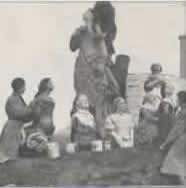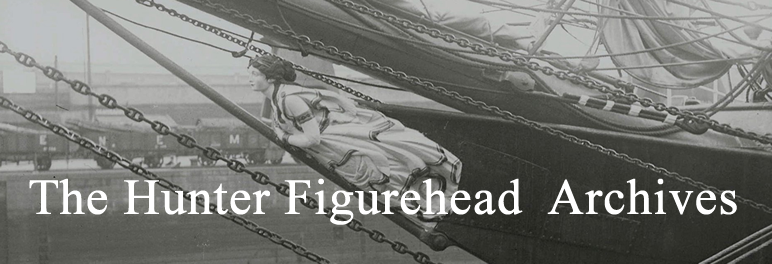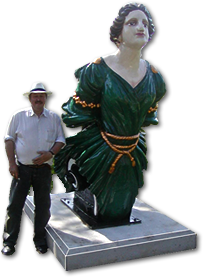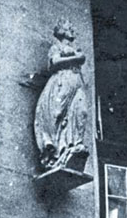Restoration of The Pendragon Castle

Today she stands serenely in the showrooms of Trinity marine looking out over the beautiful South Devon Town of Teignmouth, a truly magnificent sight at over 7 feet tall as graceful and as charming as the day she was carved over 115 years ago, her name is “PENDRAGONCASTLE” perhaps her crew had a nick-name for her the “PENNY” or even the old dragon, who knows, what is known however is that she was built at the shipyard of RICHARD WILLIAMSON & SON of Workington, Lancashire one of several vessels built in this yard and known throughout the Maritime World of the time, as the Workington sisters, each one built to the same design and layout four-masted steel Barque with a tonnage of 2512 GRT and 2463 NRT, with a flush deck, like many hundreds of other sailing ships builtUp and down the United Kingdom, the very backbone of our Maritime Trade, “PENDRAGON CASTLE” was built for the Pendragon Castle Ship Company Limited and launched on the 23rd January 1891, for J Chambers & Company Limited of Liverpool, in all she made five round voyages under the British Red Ensign, the first over to India and the port of Calcutta and back to Hull in East Yorkshire, arriving back up the Humber in the worse blizzard to hit that part of the United Kingdom in over 100 years, 113 days out and almost within sign of port she touched the Halle sands, losing both her anchors and cables, and had to be taken in hand by the local tugs, on her next voyage she was loaded with coal in Cardiff for Colombo,a trip of 4351 miles, she did this in 19 days, with a 24hour best of 343 miles, her return voyage to the United Kingdom was to prove disastrous, she had cholera aboard and had to put into St Helena for assistance, some of the crew has already died of the disease in Rangoon, her master died soon after her arrival in England.

 Over the past twenty five years Richard Hunter has become increasingly involved in a number of important Figurehead restoration projects around the world, including the replication of lost original Figureheads. On the following pages are details of some of these restorations.
Over the past twenty five years Richard Hunter has become increasingly involved in a number of important Figurehead restoration projects around the world, including the replication of lost original Figureheads. On the following pages are details of some of these restorations. berystwyth on the Mid Welsh coast has but two brief mentions in this interesting register of the Nations monuments to the great and the good, the first being the only known full length statue on the British mainland dedicated to H.R H Edward Albert, Prince of Wales future King Edward VIII late Duke of Windsor, standing in the forecourt of the original college (now University building) over looking the Irish Sea.
berystwyth on the Mid Welsh coast has but two brief mentions in this interesting register of the Nations monuments to the great and the good, the first being the only known full length statue on the British mainland dedicated to H.R H Edward Albert, Prince of Wales future King Edward VIII late Duke of Windsor, standing in the forecourt of the original college (now University building) over looking the Irish Sea.